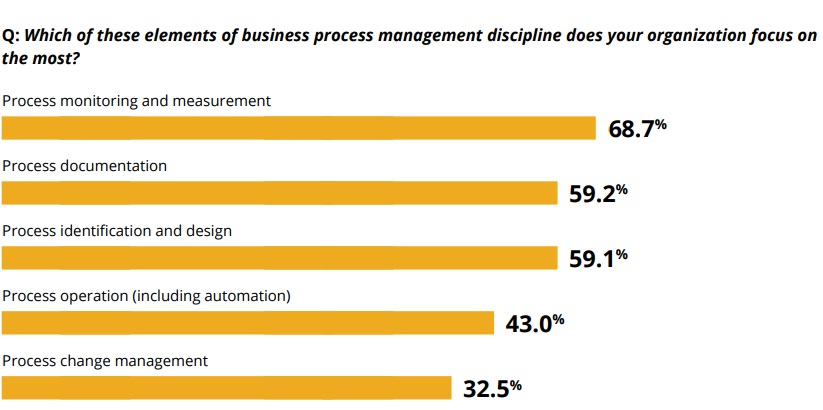Which areas of business are most organizations focusing on to optimize?
No business wants to be left behind by its competition. And no business can afford to pass up opportunities to differentiate itself and affect tangible business improvements. That’s why many organizations have embraced the importance of optimized business processes.
But embracing and succeeding are not the same. Which areas of a business are most organizations focusing on to optimize? And what role can the emerging practice of process observability play in this?
Remaining competitive and agile
Many organizations understand the pressures of modern business and the need to remain competitive and agile in the face of various threats. In the IDC Modern Process Transformation Survey, 2023, nearly half of respondents (48.1%) said that changing customer expectations are significantly impacting their business, while 37.7% said stronger competition was impactful.
These issues are enormously concerning and should set alarm bells ringing in businesses across all industries. The same IDC research revealed in response to these pressures, 39.2% of respondents’ organizations have been particularly focused on increasing operational efficiency over the previous two years.
The need for business process optimization
Pressures such as customer expectations and strong competition are why organizations are so keen to optimize their business processes, to find the gains that give them competitive advantage. A new IDC White Paper, sponsored by SAP, Business Process Observability: A Collaborative Approach to Transformation Enablement (doc #EUR251308223, November 2023), looks at how organizations must obtain actionable insights around their processes and make sense of, streamline, and automate operations. Yet less than half of the research respondents said their organization is performing well at any of the core business process management (BPM) capabilities.
Only one-third of organizations use specialized process intelligence tools to anticipate potential issues and alert teams about them, while for 68.7% of respondents the main focus is on process monitoring and measurement. In short, while organizations are faring well enough in basic BPM, they are struggling with more advanced capabilities and functionality.

IDC White Paper, sponsored by SAP, Business Process Observability: A Collaborative Approach to Transformation Enablement (doc #EUR251308223, November 2023)
Furthermore, the amount of BPM focus across business functions varied. IT operations (39.8%), general operations and management (34.7%), and CX and CRM (33.8%) were all areas that scored highly in the IDC White Paper. But surely organizations need to be looking for process optimization across the enterprise to achieve their strategic objectives. Any gain or improvement is essential, so how can this best be achieved?
A new approach to processes
Organizations require a much deeper level of actionable insight: why a process is behaving in a particular way, why (and when) problems arise, where the opportunities for improvement can be found, and even whether changes are having a positive impact and to what extent.
While this can be achieved with process mining, a new approach can deliver even better process performance. This is highly collaborative, and requires diverse stakeholders with different backgrounds, responsibilities, and skill sets to work together with various information sources and analysis perspectives. This creates a richer view of all elements of business processes, and their health and performance, and means teams can quickly implement changes and take action.
IDC stated that any organization capable of identifying and integrating the necessary data across multiple sources to drive insights, will “have a head start on those that cannot.” Can enterprises afford to turn down such potential advantage by not prioritizing this new approach across business functions?
For a more in-depth insight into optimizing business processes, you can download IDC Info Snapshot “Maximize Business Performance with Enterprise Observability: Unleashing Insights and Collaboration”




